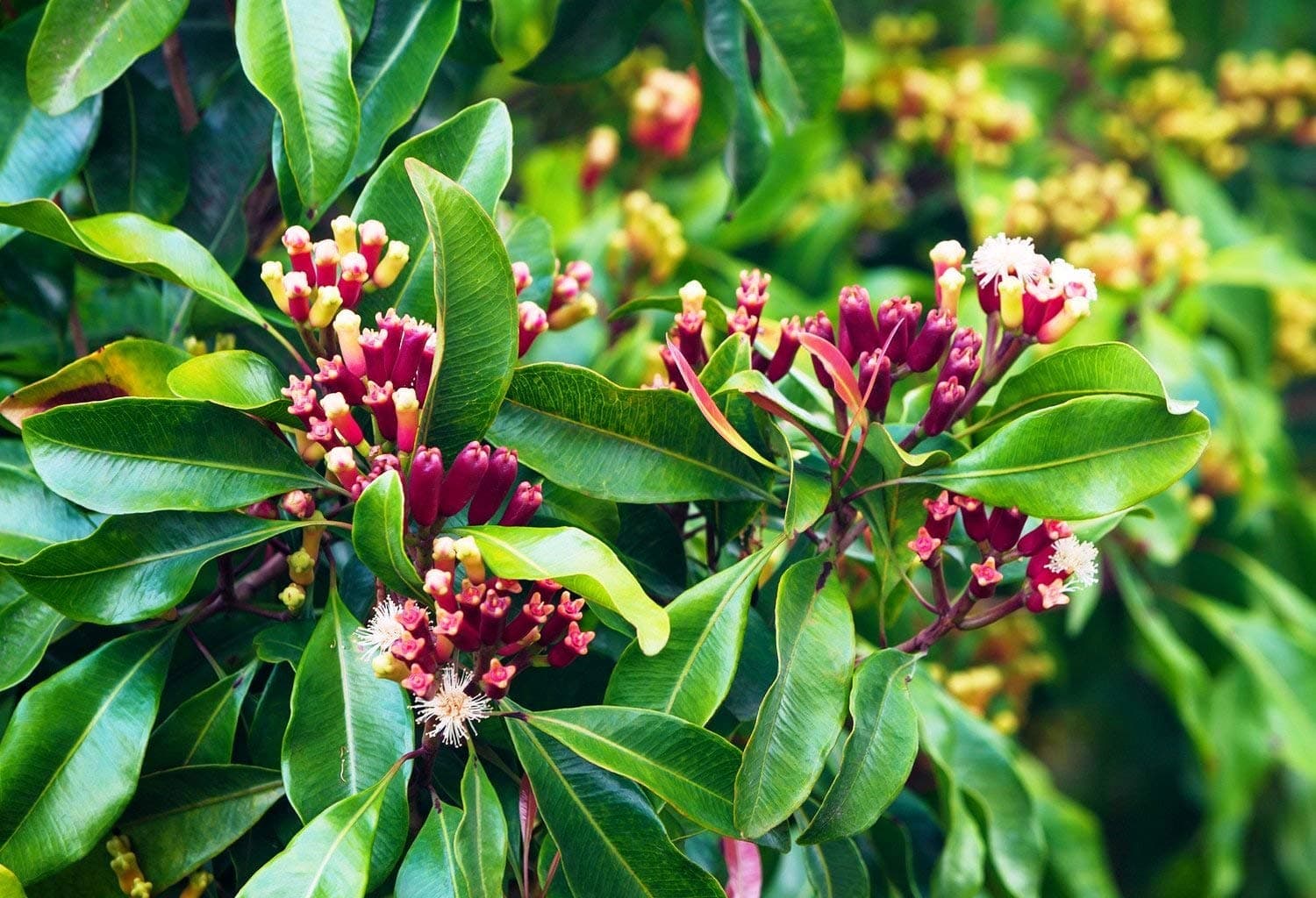
Scientific Name
Syzygium aromaticum
Common Names
Clove, Clove Bud
Plant Family
Myrtaceae
Location
Native to the Maluku Islands (Indonesia). Now cultivated in India, Sri Lanka, Tanzania, and Madagascar. Thrives in tropical climates with rich soil and consistent moisture.
Description
Evergreen tree with leathery leaves and small, pink buds that dry to become the familiar clove spice. The buds are intensely aromatic — pungent, hot, and slightly numbing to the tongue.
Uses
A potent and versatile herbal medicine prized for its strong analgesic, anti-inflammatory, antimicrobial, and antifungal properties. It is especially known for relieving oral pain (e.g. toothache), sore gums, digestive discomfort, and respiratory irritation. As a warming aromatic, it acts as a carminative, soothing gas, bloating, nausea; as well, it helps stimulate digestion and appetite. The phenolic compounds (especially eugenol) and flavonoids also give clove powerful antioxidant effects, protecting tissues from oxidative damage. Its antimicrobial and antifungal actions are broad: clove essential oil and extracts have been shown to inhibit bacteria, fungi, and viruses, making it useful for skin infections, oral hygiene, wound healing, and for treating or preventing infections in traditional medicine. In addition, clove has antipyretic (fever-reducing) and antiseptic uses, and is used in traditional remedies for coughs, colds, and as part of digestive bitters. Altogether, Syzygium aromaticum serves as a stimulating, warming, protective herb in many systems, especially valuable where pain, infection, inflammation, or stagnation are present.
Energetics
Hot, pungent, slightly drying. Strongly stimulating and dispersive. Moves blood and energy.
Parts Used
Dried flower buds, essential oil
Constituents
Volatile oils (especially eugenol), tannins, flavonoids, sesquiterpenes
Dosage
- Tincture (1:5): 5–20 drops, as needed
- Powder: A pinch added to formulas or used in spice blends
- Essential oil (diluted): For topical use or inhalation
Notes on Use
Clove is intense — a little goes a long way. Use it most in winter formulas or digestive blends where there’s gas, cold, or cramping. Great topically for tooth pain (diluted), or in blends for cold hands and feet. Also helpful in “disinfectant” blends for homes and sickrooms.
Harvesting
• Buds are harvested before opening, then dried. Most are imported.
Contraindications
Use cautiously with sensitive mucous membranes. Essential oil must be diluted. Avoid large doses in pregnancy or with bleeding disorders.
Recipes
- Toothache Oil: Clove EO, myrrh, wintergreen in carrier oil
- Warming Digestive Blend: Clove, cinnamon, ginger
- Thieves Spray: Clove, cinnamon, eucalyptus, rosemary, lemon (diluted in alcohol)